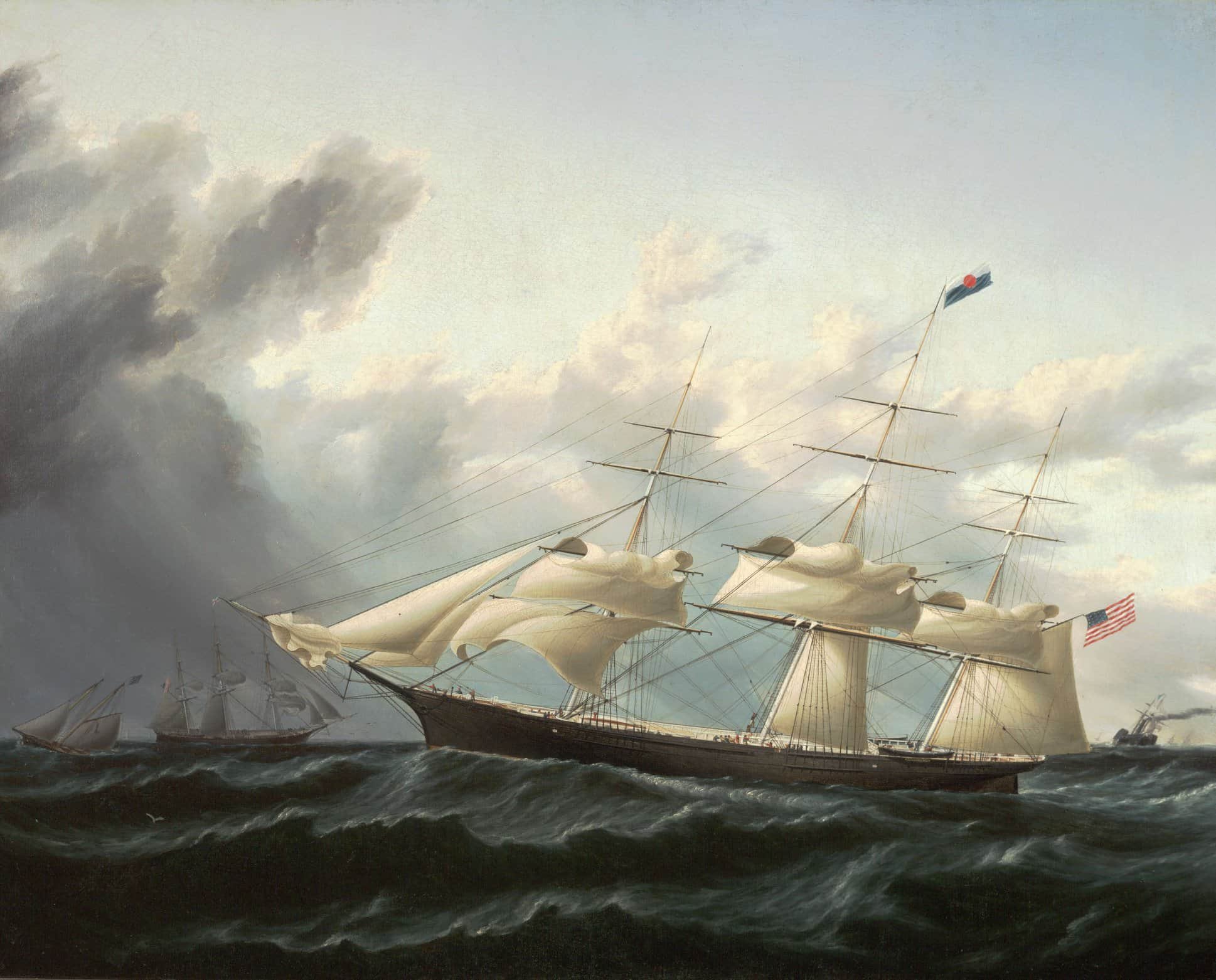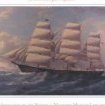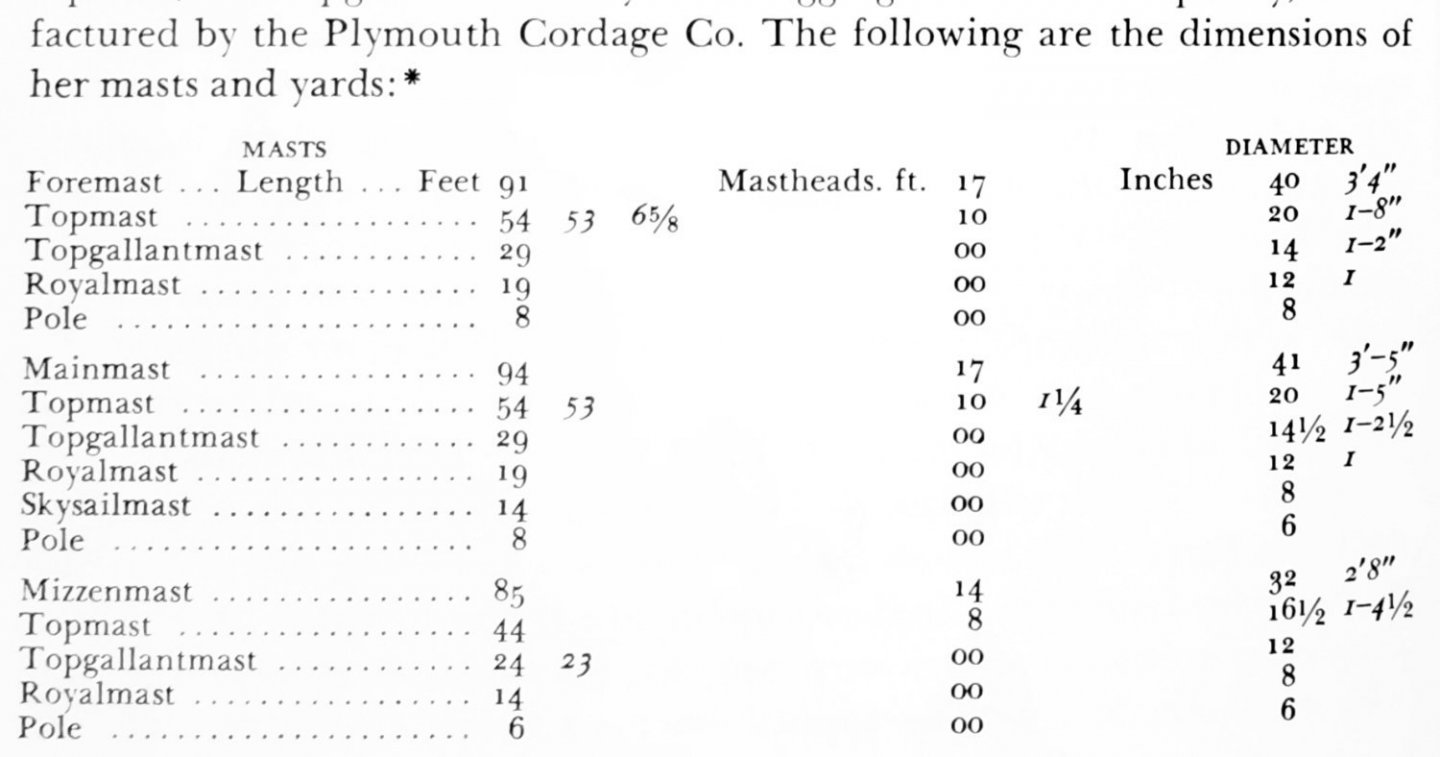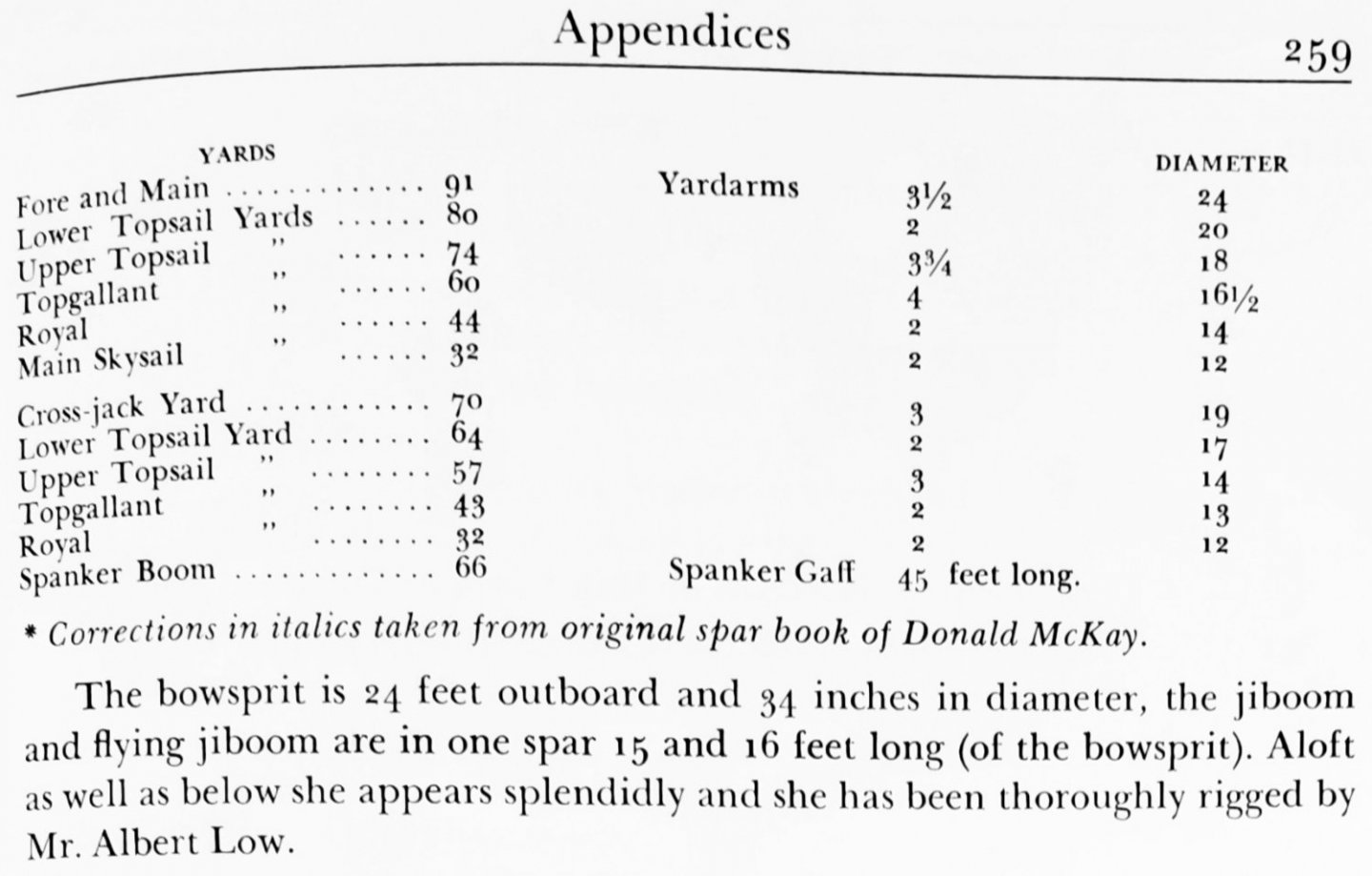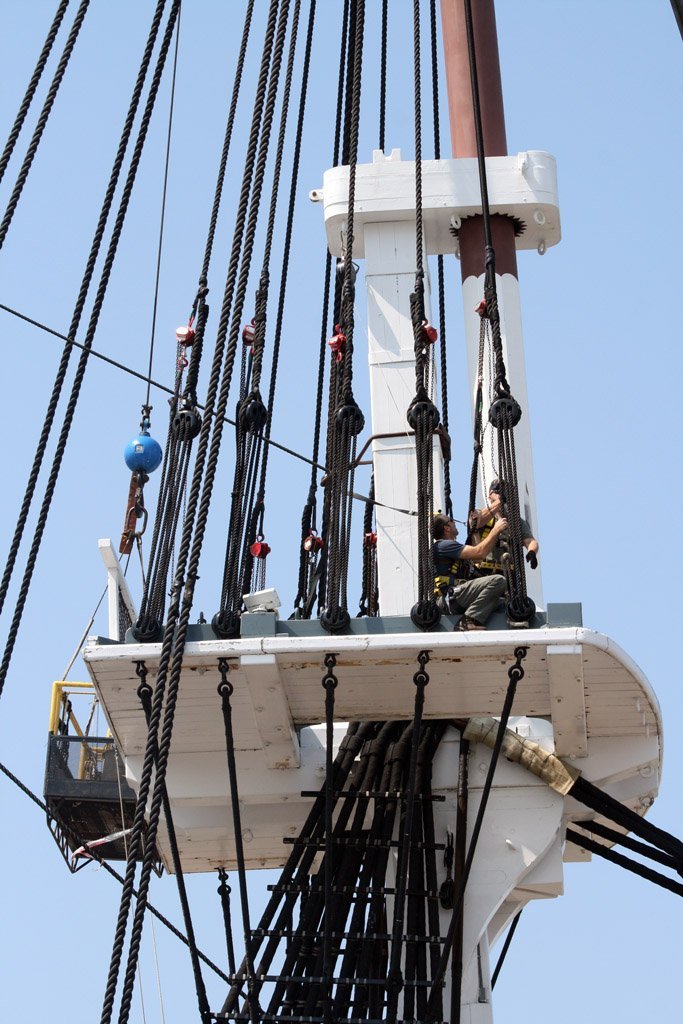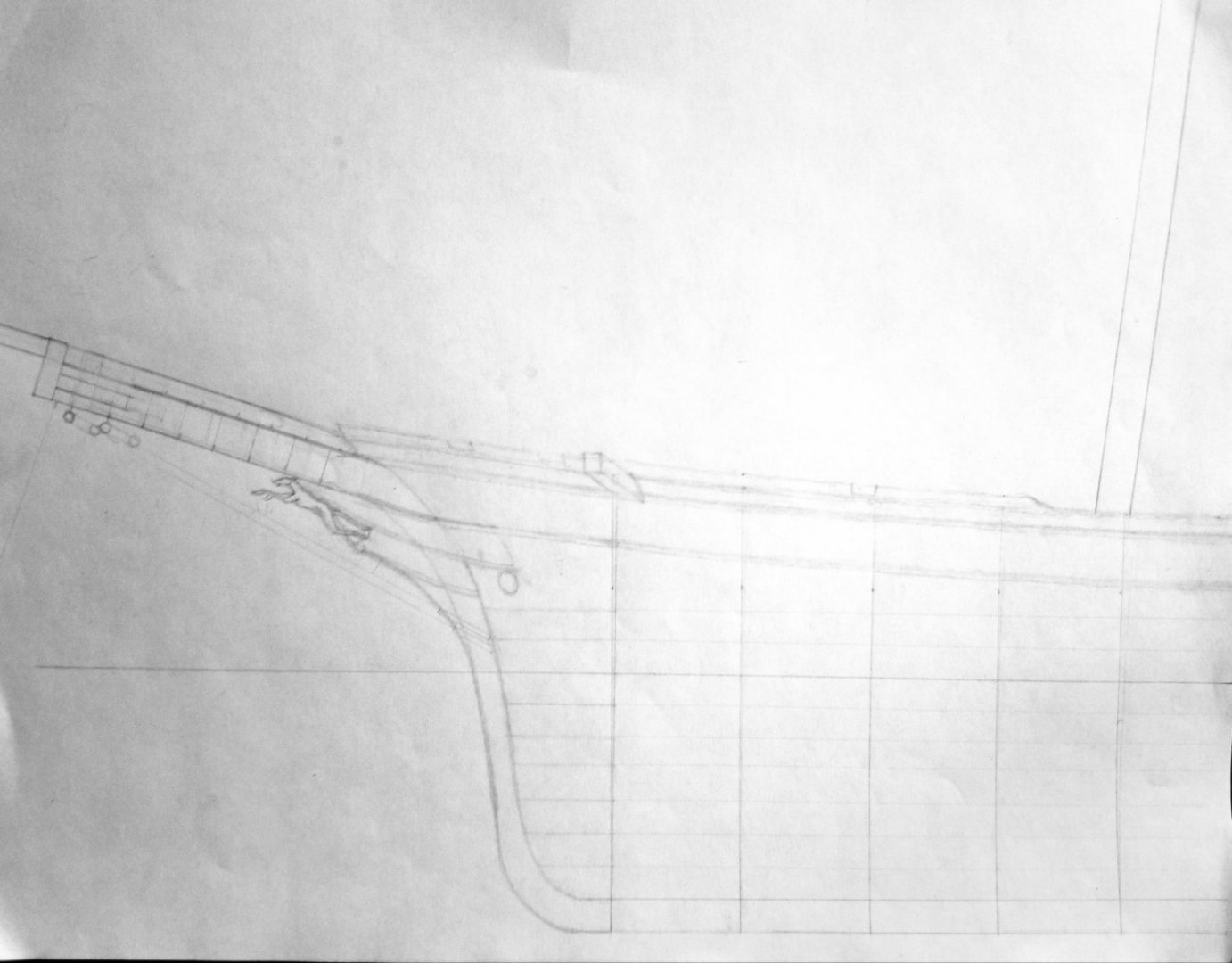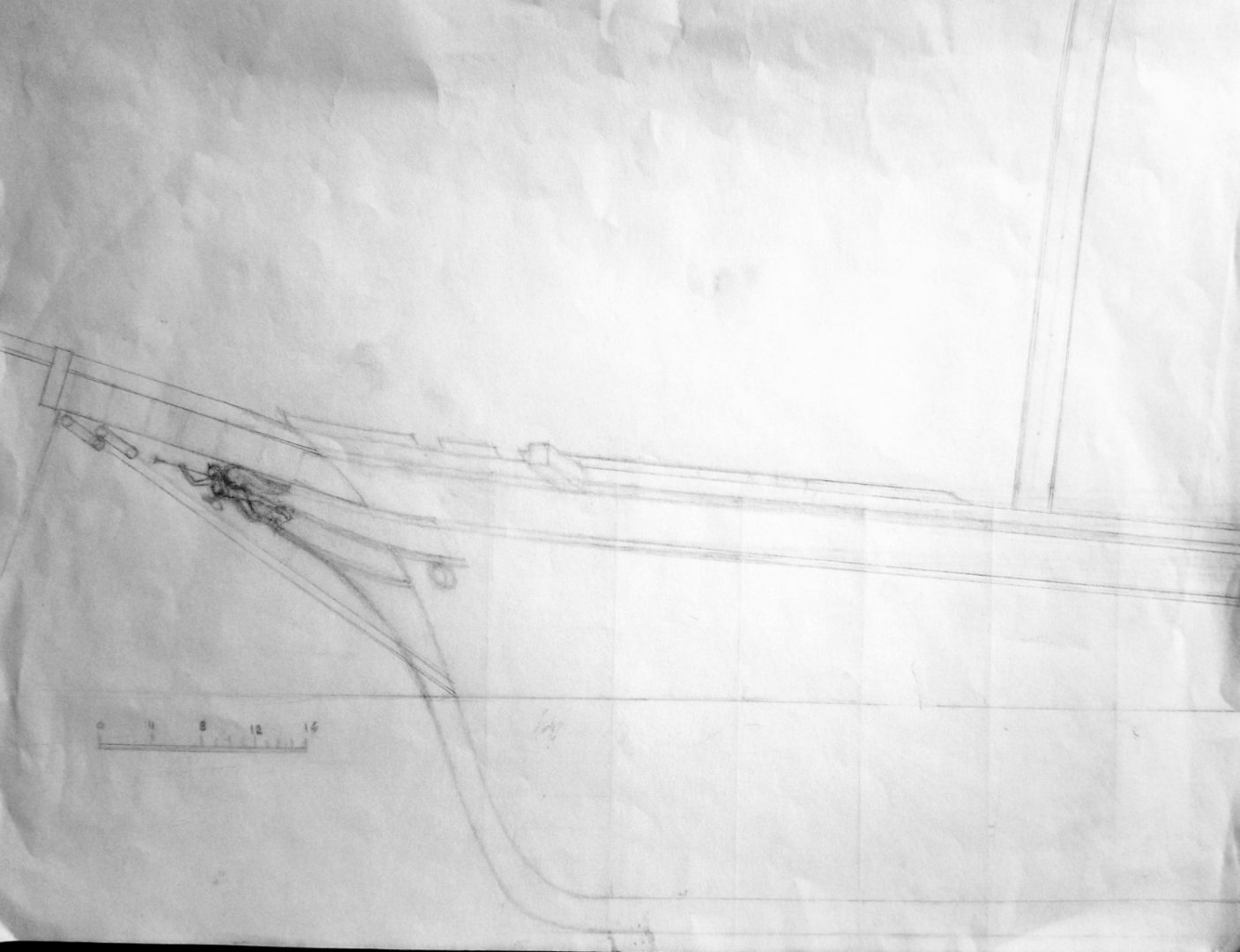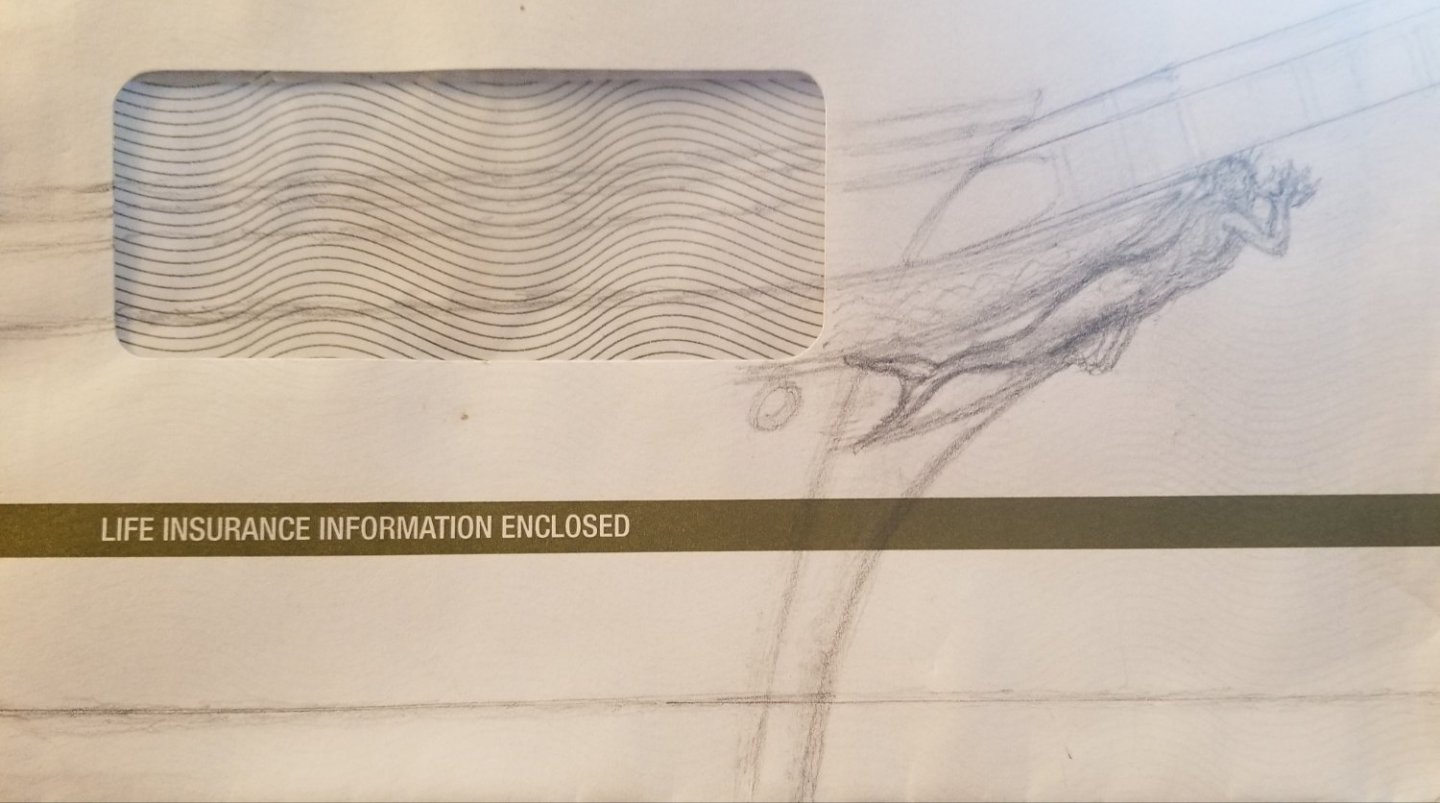-
Posts
2,152 -
Joined
-
Last visited
Content Type
Profiles
Forums
Gallery
Events
Everything posted by ClipperFan
-
Vladimir, when you share images, please don't overlap them. It's not possible to see all examples you show this way. Depicting a working ship in the process of being towed out would add more interest and realism to your vessel. I'm not sure if this would lower the amount of blocks used, since all running rigging would still be necessary, maybe Rob can share more insight into your concern. I would think that the six lower & upper topsails would be the first set. Main courses would probably be getting readied to be lowered and the rest would still probably be tightly fueled. Good luck!
-
Rob, I sort of followed your description but these process images are much more illustrative. I admire your creative inventiveness. The finished product is amazing in its authentic fealty to the real thing.
- 3,560 replies
-
- clipper
- hull model
-
(and 2 more)
Tagged with:
-
Rob, Glory's main yardarm looks larger in this image due to the fact that it's the sole remaining spar. When she was fully rigged, these massive spars actually look smaller in proportion to each other. A hallmark of McKay's wonderful Clippers were his aggressive yardarm specifications.
- 3,560 replies
-
- clipper
- hull model
-
(and 2 more)
Tagged with:
-
Vladimir, it's nice to see the great progress you've made on mating your large "GLORY of the SEAS" replica. All I can think is how truly imposing she must be in person. I'm sure the beautiful images you share don't fully do her justice. It may be perspective distortion from the photos but in case not, I'm just going to let you know my observations. Please understand in no way is this intended to be critical, only to aid in your goal of achieving the most accurate replica. At 94', the lower mainmast is 3' taller than the 91' lower foremast, yet the photo makes it appear as if the foremast is slightly taller. Both topmasts are 54' (more precisely fore topmost is 53' 6&5/8", main topmost is 53' per McKay's corrections). For some reason, the main topmost again looks shorter. Combined dimensions above main topmast are 70' a full 14' taller than the 56' high foremast components. Meanwhile at 85' the mizzenmast is just 6' shorter than the foremast. However, since the foremast has a 17' masthead and the mizzen's is just 14' the actual height difference is just 3'. It looks much shorter than that on your replica. I've included 2 appendices which list all of Glory's mast and yard dimensions taken from Michael Mjelde's sources.
-
George, I just want to add in that the most impressive feat you professional level modelers display is your willingness to scratch build practically anything. More amazing, is how you make it look so easy too. Great work!
- 602 replies
-
- Flying Fish
- Model Shipways
-
(and 2 more)
Tagged with:
-
Rob, thanks for sharing all these scratch build construction procedures. I'm so used to having all pre built, plastic pieces ready to assemble (even with their gross inaccuracies) that to consider scratch building in wood no less is sheer intimidation. But you never know. Seeing your and Vlad's progress is just so inspiring, you never can tell for sure if someday I might not be tempted too.....
- 3,560 replies
-
- clipper
- hull model
-
(and 2 more)
Tagged with:
-
Rob, as the popular saying goes "it's the devil in the details". Having said that, I absolutely love your detail work. Nicely done on Glory's fiferail.
- 3,560 replies
-
- clipper
- hull model
-
(and 2 more)
Tagged with:
-
Rob, you must have Tom Thumb on your Shipyard's payroll.....
- 3,560 replies
-
- clipper
- hull model
-
(and 2 more)
Tagged with:
-
Rob, Vladimir, Pat, here's a close up of USS Constitution's Foretop. The Shrouds are arranged in dual loops from Bow to Stern. While you can't see what they're arranged through it appears they all go through a single long source.
- 3,560 replies
-
- clipper
- hull model
-
(and 2 more)
Tagged with:
-
Banyan, Pat thanks for this explanation with associated images. Since all Shrouds align to a similar location, this simple solution makes eminent sense. It would be interesting to see if American counterparts utilized the same approach.
- 3,560 replies
-
- clipper
- hull model
-
(and 2 more)
Tagged with:
-
Rob, beautiful mast, perfect symmetry. You consistently do such impressive, professional work!
- 3,560 replies
-
- clipper
- hull model
-
(and 2 more)
Tagged with:
-
Rob, it'll be fascinating to see your step by step rigging procedure. Thanks for continuing to share this painstaking process.
- 3,560 replies
-
- clipper
- hull model
-
(and 2 more)
Tagged with:
-
Rob, you most definitely have an eagle eye. Great catch on those tightly furled sails. I didn't even realize they were there until you pointed them out!
- 3,560 replies
-
- clipper
- hull model
-
(and 2 more)
Tagged with:
-
Vladimir, thanks for the compliment, I appreciate it. Without exaggeration, the many, many very impressive, yet frustratingly inaccurate models of Donald McKay's beautiful Clippers have been a constant "thorn in my side." I guess you can say I'm a "man on a mission" to finally set the record straight. That's a big part of my added motivation to finally recreate a clear picture of the real "GLORY of the SEAS". I really consider her the "Rosetta Stone" key to unlocking the genuine looks of McKay's Clippers. When I have a chance, I'll have to look at Chuck's Wincheslea build.
-
Rob, Vladimir.... inspired by our year's long journey of discovery of the true appearance of "GLORY of the SEAS" I decided to sketch the most accurate reconstructions of other capital ships McKay designed: his premier Extreme Clipper "Staghound" followed by the famous Extreme Clipper "Flying Cloud" (incidentally both of these ships are in the exact same scale by pure coincidence) and finally his mammoth Clipper "Sovereign of the Seas." sketched on the back of an envelope. Later on I intend to include the Australian Clipper "Lightning". I recently discovered another Samuel Walters oil which shows her with her original female winged figurehead, again mounted on a similar pedestal as Glory's goddess 'Athene'. After I write the NRJ article (I missed Jan 1st deadline, next one is April 1st) I plan to start a blog (post?) about this historically valid reinterpretation of Donald McKay's Clippers. He remains our most famous, yet greatly misunderstood Clipper designer.
-
Rob, looking at the complex construction of this wooden mizzen mast gives me greater appreciation for the advanced knowledge, scientifically developed and truly sophisticated approach these ship builders utilized in building these powerful masts. Hidden iron rebar reinforcement, hollow centers with ventilated airflow to prevent rot? Who knew? By reproducing these construction details, you guys may actually lengthen the lives of your own masts. Thanks for sharing your in depth knowledge of these fascinating structures.
-
George K, I wouldn't gild the figurehead at all. Burnished probably meant small highlights. Also, from the pictures, it's hard to tell that you had already paint your fish any shade of green. Meanwhile when you finish refining the small gaps in the Bow, you will have constructed one of the most accurate models of "Flying Fish" ever done.
- 602 replies
-
- Flying Fish
- Model Shipways
-
(and 2 more)
Tagged with:
-
George K, the only other suggestion I have for your figurehead, as far as fealty to the original has to do with her paint scheme. In his Boston Daily Atlas article description, Duncan MacLean simply wrote that the figurehead was "burnished with gold and green." In life, these lovely aerobatic fish are darker above to their midline, then lighter below. Their gossamer wings have very fine lace like veins which separate into beautiful butterfly patterns. Of course, when dealing with small sculptures, less is more, due to such a diminutive scale..
- 602 replies
-
- Flying Fish
- Model Shipways
-
(and 2 more)
Tagged with:
About us
Modelshipworld - Advancing Ship Modeling through Research
SSL Secured
Your security is important for us so this Website is SSL-Secured
NRG Mailing Address
Nautical Research Guild
237 South Lincoln Street
Westmont IL, 60559-1917
Model Ship World ® and the MSW logo are Registered Trademarks, and belong to the Nautical Research Guild (United States Patent and Trademark Office: No. 6,929,264 & No. 6,929,274, registered Dec. 20, 2022)
Helpful Links
About the NRG
If you enjoy building ship models that are historically accurate as well as beautiful, then The Nautical Research Guild (NRG) is just right for you.
The Guild is a non-profit educational organization whose mission is to “Advance Ship Modeling Through Research”. We provide support to our members in their efforts to raise the quality of their model ships.
The Nautical Research Guild has published our world-renowned quarterly magazine, The Nautical Research Journal, since 1955. The pages of the Journal are full of articles by accomplished ship modelers who show you how they create those exquisite details on their models, and by maritime historians who show you the correct details to build. The Journal is available in both print and digital editions. Go to the NRG web site (www.thenrg.org) to download a complimentary digital copy of the Journal. The NRG also publishes plan sets, books and compilations of back issues of the Journal and the former Ships in Scale and Model Ship Builder magazines.

